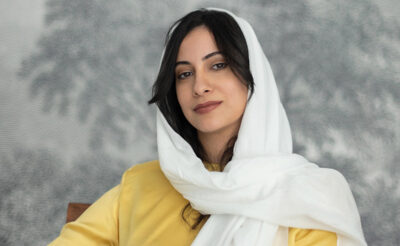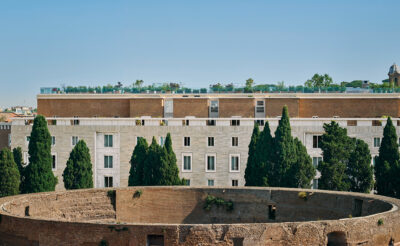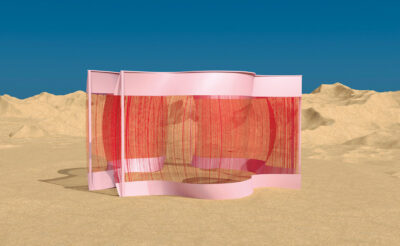A conversation between curator, Dr Dieter Buchhard, and art specialist, Dina Nasser Khadivi, about the Jean-Michel Basquiat - Egon Schiele exhibition at the Louis Vuitton Foundation, Paris
Dina Nasser Khadivi: The exhibition we are about to discuss – which you curated with your team at the Louis Vuitton Foundation this year – is in fact two presentations running parallel: one retrospective on Jean-Michel Basquiat and a detailed survey on Egon Schiele.
Both artists died at the age of 28 under tragic circumstances, yet in under a decade they became major figures in the art of their century. Through your show, we will also discover that they are linked by several similarities including their destiny and their fortune, that of a short-lived body of work and lastly, the impact and permanency of their oeuvre.
I have personally seen a few exhibitions surveying links between artists, including one a couple of years ago at the Andy Warhol Museum in Pittsburgh which presented Ai Wei Wei and Warhol, but from a curatorial perspective, your approach here fascinates me not just for its ability to show the parallels in these two men’s lives but also their differences and similarities within their respective contexts. Schiele lived from 1880 to 1918 and Basquiat from 1960-1988, which means they both lived at opposite ends of the same century and at opposite ends of the world, however they both worked and lived during pivotal times. Can you tell me how this show came about and how long it took you and the LVF (Louis Vuitton Foundation) team to put it together? Do you plan to make it travel?
Dr Dieter Buchhard: We started talking about this show eight years ago and decided to work on it three years ago. In terms of it travelling, part of the Basquiat show will later go to the new Brandt Foundation in New York’s Lower East Side which will open on 1st March 2019. This will include the highlights of the LVF show which are about 45-50 paintings along with some large scale drawings. The Schiele exhibition however will not travel as the concept of the two presentations we did in Paris was designed specifically for the LVF.
The Basquiat show was a collaboration with the Brandt Foundation which is why a large part of it will travel there later once the LVF exhibition ends. I had also originally mentioned that if we were to do a project on such an important scale, the Basquiat show should at least travel as we were gathering so many important works for it. But the two shows remain separate concepts entirely. With the LVF, you get a chance to see Basquiat’s work while revisiting the similarities and differences with Schiele. It’s important to know that one of the main reasons behind having the Schiele show was also in fact to show it alongside the Basquiat exhibition. Incidentally the Schiele exhibition at LVF also happens to be the first major curated show of his in France. There had been only two minor collection presentations till now which took place some 25-30 years ago, but nothing comparable to what you will see at the LVF.

J.M. Basquiat and E.Schiele, two exhibitions organised by the Foundation Louis Vuitton, Paris, France
DNK: Indeed Suzanne Pagé mentioned that through Egon Schiele, we’re seeing the Fondation Louis Vuitton dedicate a monograph to an “historical” artist for the first time. Similarly, through Jean-Michel Basquiat, is also the first time that it has hosted an exhibition of this size devoted to a single artist. On your end, you have done several shows including Basquiat’s work including the 2010 retrospective at the Fondation Beyeler in Basel, Switzerland, and an exhibition in collaboration with the Guggenheim Bilbao, as well as more recently “Basquiat Boom for Real” at the Barbican Art Gallery in London. You have now become an authority on his work as you have also published several publications about his oeuvre. Can you tell me how, in your opinion, the project at the LVF differs to others you have done which focused on him? I know the scale is one thing, you also cover his entire career and have a number of heads on display.
Dr. Buchhard: In the last decade, the reception and the importance of Jean-Michel Basquiat has changed. People have started really understanding that Basquiat was not a neo expressionist but that he was a conceptual based artist very much feeling the line, the word, the collage up to the assemblage and that is what this exhibition shows for the first time actually. When you go up to the last room you will see what “collage” is and you will also see that during his life and his eight years of production these works were all very much anchored in the intellectual question of the use of words and the question of the inner logic of the work. This is something that has been presented through the LVF exhibition, and that had not been done before, or in any of my other shows.
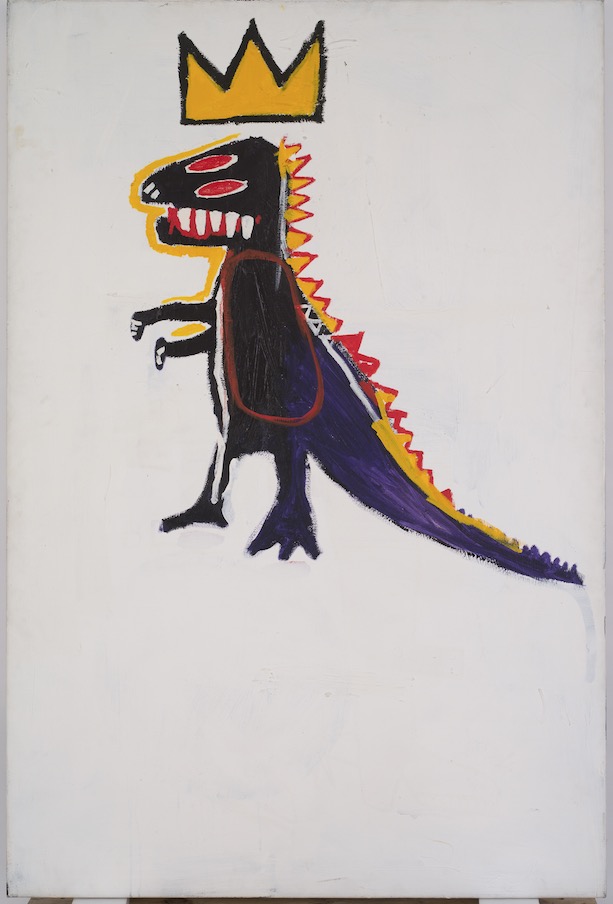
Jean-Michel Basquiat
Pez Dispenser, 1984
Acrylic and oilstick on canvas 183 x 122 cm
Private collection. Courtesy Galerie Enrico Navarra © Estate of Jean-Michel Basquiat.
Licensed by Artestar, New York.
Picture: © Tutti-image. Bertrand Huet
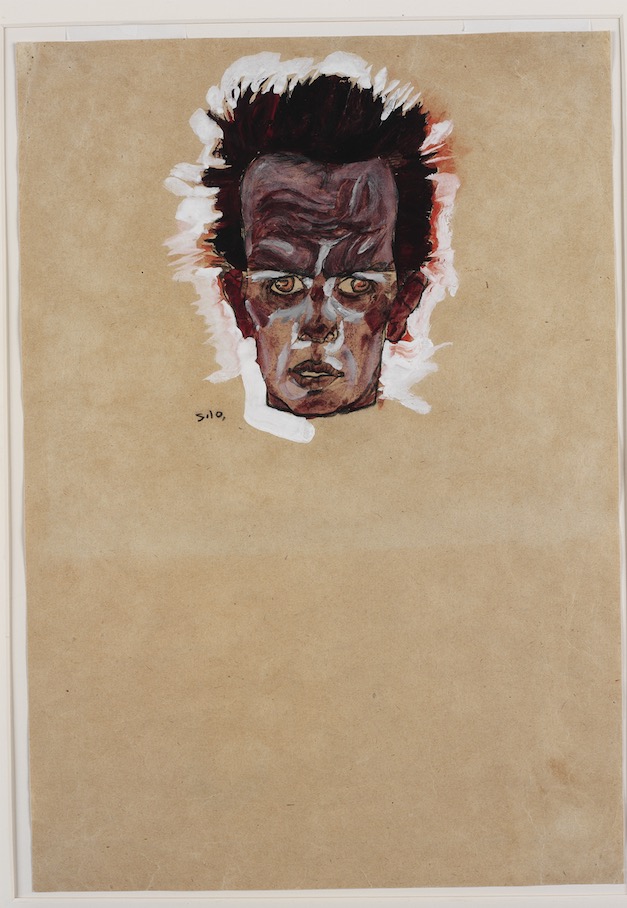
Egon Schiele
Self-Portrait, Head, 1910
Watercolor, gouache, and black crayon on paper 43.8 × 31.1 cm
Neue Galerie New York. Gift of the Serge
and Vally Sabarsky Foundation, Inc.
Picture: © Hulya Kolabas for Neue Galerie New York
DNK: Both Schiele and Basquiat both respectively stand out now within the canon of art history, but they also shared another important parallel which was that they had both established mentors/figures in their lives. Basquiat was friends with Warhol while Schiele initially had Klimt as his mentor. I know you dedicated a specific section in each presentation to show these collaborations and influences. As both artists have now become icons themselves within the progression of Art History do you think they could have perhaps taken an interest in mentoring other artists in their respective times had they lived longer? Basquiat may be an easier example to think of as he would have been 56 today and there are so many African American artists on the rise right now. Many of whom are fighting the very issues he denounced in his work.
DB: Hmmm …that is a difficult question because both artists were very focused on their own work… I am not sure if they could have been mentors. It’s hard to say. When you think of an artist like Picasso for instance he was never really a mentor in his lifetime, but he was nevertheless very influential to other artists. So, I think it’s more about the influences of these artists. And even Warhol for Basquiat and Klimt for Schiele in the end, even though they were interested in the contexts of these artists – and Warhol and Basquiat befriended really – it was always about going ahead and defining their own art much more than referencing the other.
DNK: I read in an interview you once did that you liked working with artists that remain relevant whether they are alive or deceased. Artists who you mentioned “would still have something to say now, that are relatable to us, and from whom we could learn something from.” Having visited the LVF in the past I also know that their mission is to reach broad audiences and that, as Suzanne Pagé mentioned, their aim is to “anchor the foundation’s commitment to current creation in a historical perspective”. Well, whoever I spoke to that has seen your exhibition so far, all unanimously loved your show. This includes people from various age groups, from different parts of the world and individuals who did not necessarily have a background in art. They all said that it somehow made them change their minds with respect to Basquiat’s work. Even in my case, while Schiele has always been one of my favorite artists, I was never a fan of Basquiat until your exhibition. You genuinely managed to create a difference in people’s minds and your show made a great impact. One that went beyond the art world. Having myself curated shows in the past I always thought the goal of an exhibition should be to reach both the layman and the specialists in the topic you are presenting, and you really reached that with your team by doing this project.
DB: Well thank you very much. This is the goal indeed.
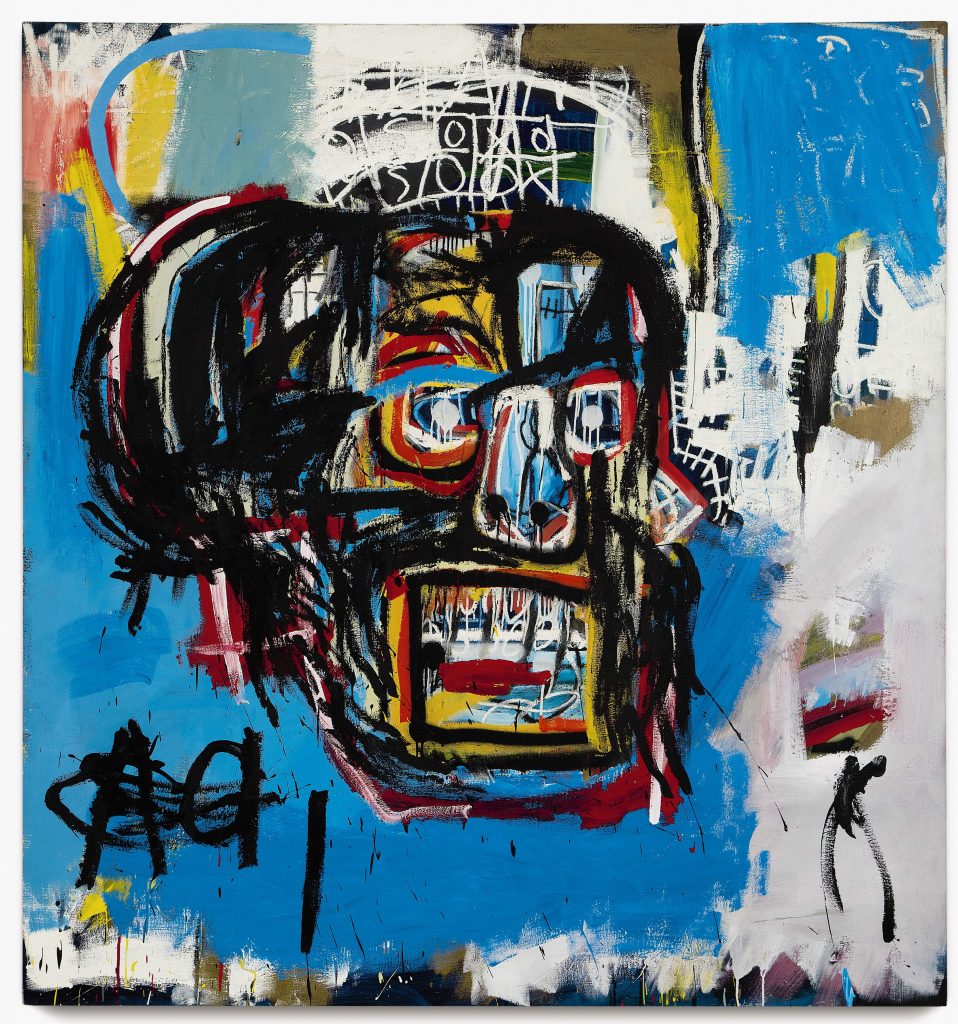
Jean-Michel Basquiat
Untitled, 1982
Acrylic, spray paint, and oilstick on canvas 183.2 × 173 cm
Yusaku Maezawa Collection, Chiba, Japan © Estate of Jean-Michel Basquiat. Licensed by Artestar, New York.
Picture: Courtesy of Sotheby’s, Inc. © 2018
DNK: Speaking of parallels, differences and standing out, I read about your background and saw that you originally studied biology, genetics and biochemistry in addition to getting a second degree in restoration and art history in Vienna. In fact, you have a doctorate in both areas which is not only beyond impressive, it is a rare and interesting combination. I believe you may just be the first person I speak to who managed to simultaneously focus on both these areas from the time they were studying. Although, I know that you came across Basquiat while you were doing a thesis on Edvard Munch and that Schiele was originally from Vienna where you studied. To me, your background almost made your interest with these two artists an organic connection. I also know that Basquiat had a fascination for the book “Gray’s Anatomy” which his mother had given him following his accident when he was seven years old, so I found this all somehow serendipitous in this instance. It appears that your way of thinking has now influenced everyone who sees your show. I see parallels everywhere. Do you think that your background has perhaps played a role in how you have responded to these artists somehow, or is it just a coincidence?
DB: Sure. Of course. Yes. Science has always been of great interest to me. When you study biology, you start with the anatomy of humans, animals and plants and I have worked with a couple of artists who have been dealing with questions relating to these matters. Munch was another for instance, but more towards the 1890s. My connection between Basquiat and Munch was actually the 1880 versus the 1980s, but Munch was picking up on all the newest scientific developments such as X-Rays etc… But to answer your question, yes sure there is definitely a link between my background and the artists I have chosen to focus on.
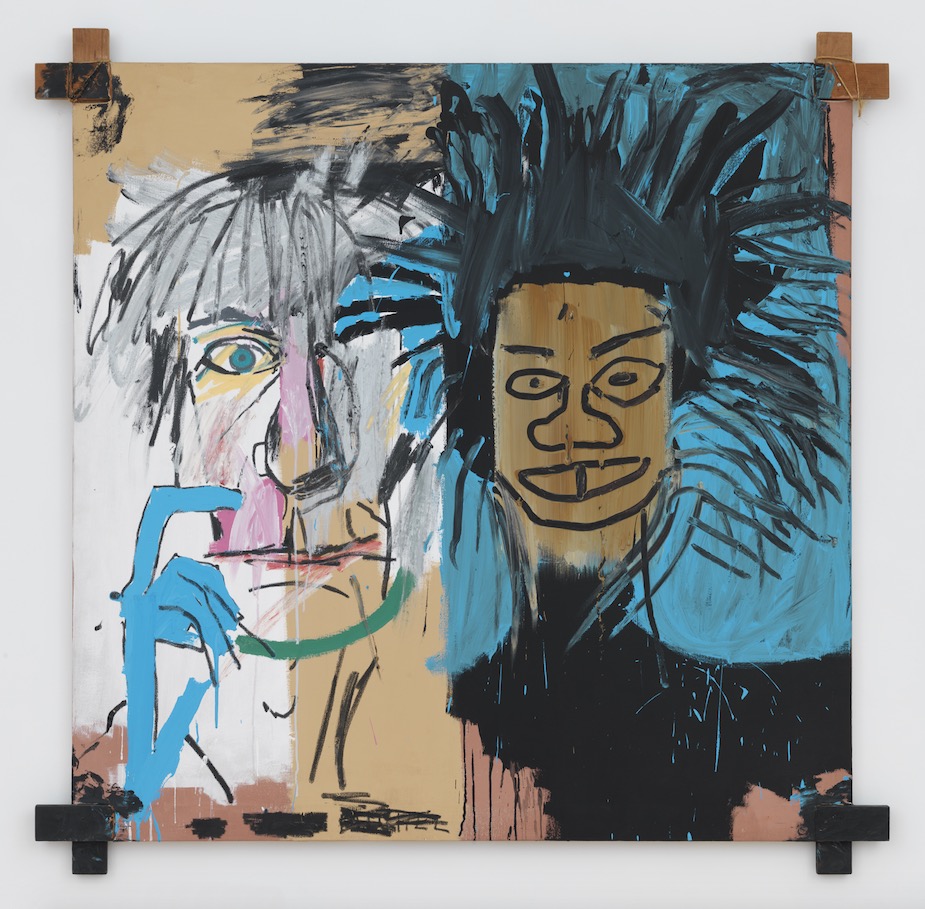
Jean-Michel Basquiat, Untitled, 1982
Acrylic, spray paint, and oilstick on canvas 183.2 × 173 cm
Yusaku Maezawa Collection, Chiba, Japan © Estate of Jean-Michel Basquiat. Licensed by Artestar, New York.
Picture: Courtesy of Sotheby’s, Inc. © 2018
DNK: A great misconception – which I know you have been trying to change with some of your projects – is that contrary to common belief, Basquiat was very educated. Aside from becoming this phenomenon during and after his life time, he was something of a prodigy: he could read and write by the age of four, he spoke fluent Spanish, French and English by the time he was 11 (thanks to his parents who were respectively Haitian and Puerto Rican), and more importantly, he was very knowledgeable of the canon of Art History and a regular visitor of the MoMA in New York. The lack of art from the regions he came from in the major museums that he visited was in fact one of the catalysts behind his work. Do you think that his reaction to racism and being marginalized back then makes his work and train of thought even more relevant today, especially with everything happening around African American Art and the “Black Lives Matter” movement?
DB: Well there is a couple of reasons why Basquiat is so relevant today. One of them is of course our time and the way in which we now treat migration, and the fact that there is still imminent racism, police brutality and so forth. All this is of course one part of what supports his amazing relevance today. But it is also the way he foresaw our way of communicating today via social media in this post internet society. In a way, he took from all the sources surrounding him and combined them in a newly created knowledge base, which is something that is our time, and why the new younger generation can read and connect with Basquiat in a different way than the generations before, who looked more on the stroke of brush and the gesture in the work rather than the intellectual content of the work. Nowadays it’s very clear. You know you have a word there, you have a cryptogram there…And it all connects, it’s a new room of thinking and that is what he offers. That is extremely contemporary today. So it’s kind of like this copy paste society we live in and which started in the 80s – I mean he sensed all that, during his time.
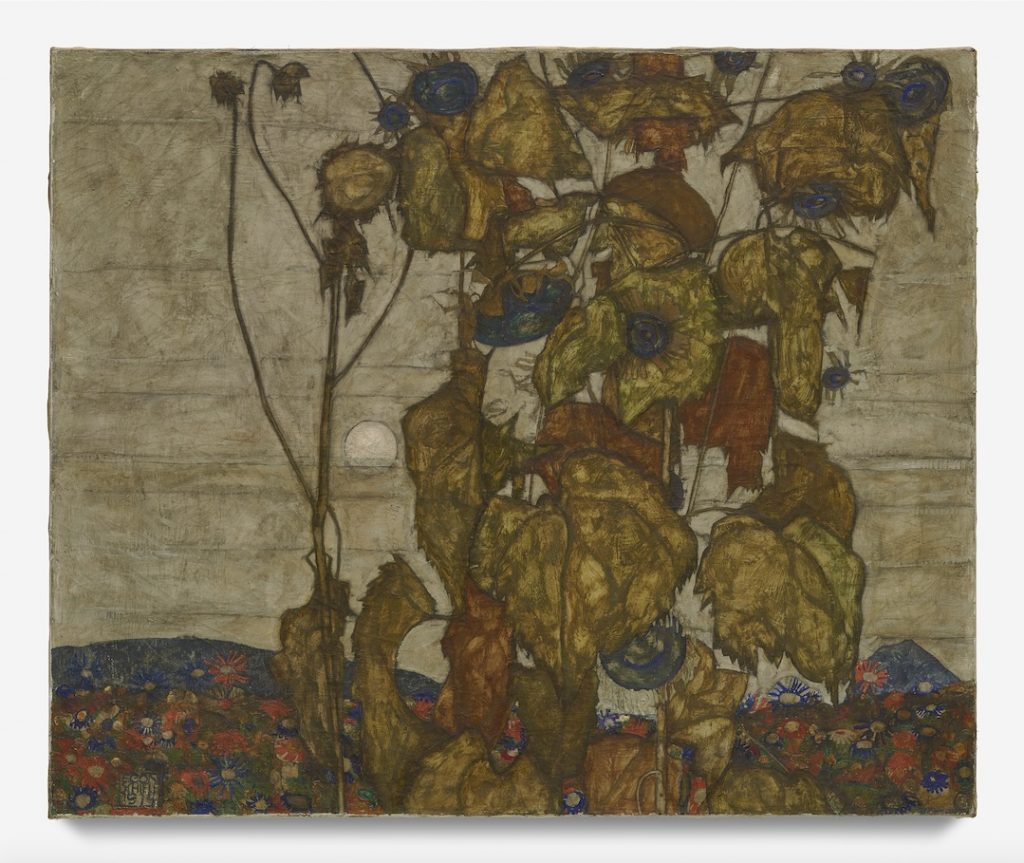
Egon Schiele
Autumn sun (Sunflowers), 1914
Oil on canvas
100 × 120.5 cm
Private collection. Courtesy of Eykyn Maclean Picture: Courtesy of Eykyn Maclean
DNK: I also find Basquiat’s approach inspiring and look at it completely differently since your exhibition as other artists including those from the Middle East are all breaking through the canon of global art history following years of seclusion. One thing that I found very interesting – which I’d previously read in an interview with you – is the fact that he made big prices at auction, and that helped his legacy and his recognition. The fact that such few museums have his works is also due to his prices and the fact that so many works are in private hands or with dealers because many museums did not acquire his works early, which is understandable, I suppose given how young he was. As such, it took a bit of time to recognize his critical importance as his works were not as “institutionalized”, this is a problem I relate to as it’s a problem we also face with some artists from our region for other reasons and circumstances. The Middle Eastern market grew despite a lack of direct academic support and so it’s uplifting to see Basquiat’s evolution and the work you do, as it shows me that our artists are following the right track and this hopefully will continue for the generations to come.
DB: Basquiat was definitely a door opener in many regards, which is also part of why he is so relevant today. He is in the line of Martin Luther King and Barack Obama not just for the African Americans but for minorities and for people who were not considered part of the art scene. His work opened up the spectrum of interest to a global view of art. It was a mission he accomplished in a way without knowing he was necessarily doing it, but he just did it. So I would confirm what you just said, yes.
DNK: Have you heard about Denise Murell, a young African American student who studied at Columbia University and who recently wrote her thesis on the presence and interpretation of black figures across Art History? Her thesis expanded to a show, which opened in October at the Wallach Art Gallery, and which has already been confirmed to travel to the Musée d’Orsay in Paris next March. I think Basquiat would have enjoyed this…both the thesis and the exhibition don’t you think?
DB: Definitely. That is very interesting.
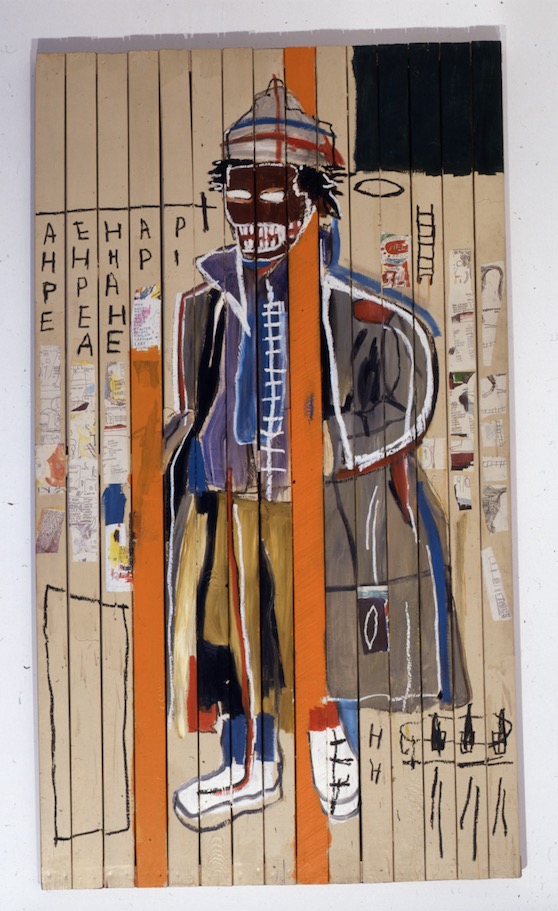
Jean-Michel Basquiat
Anthony Clark, 1985
Acrylic, oilstick, and paper collage on wood 244 x 139 cm
Private collection, London
© Estate of Jean-Michel Basquiat. Licensed by Artestar, New York.
DNK: Regarding the place in which Jean-Michel Basquiat was inaugurated in in September, the 13th arrondissement, Paris: did you go to the inauguration? What are your thoughts on it? Do you think New York will one day have a street named after him? When he was still alive European museums received his work more than American museums did, despite his colossal success at auction and having become an art star during his time, is it not odd how again it’s a major European capital who makes this move before New York?
DB: Yes of course I attended the inauguration. I think it’s great, really great, especially as there is a big connection with Basquiat and Paris and vice-versa. But it’s hard for me to say how people name places after whom really.
DNK: A fun fact to finish this conversation: Madonna was apparently Basquiat’s girlfriend at one point before she became famous. This made me realize how young I was when he was already making history as the first record I ever bought was by Madonna. It was Papa Don’t Preach and by then I was seven years old and she was already famous. I was wondering where you were in the early 80s? Had you already come across Basquiat’s name back then?
DB: Madonna was indeed Basquiat’s girlfriend for a couple months. I was in Europe around then … And yes absolutely, I was already well aware of Keith Haring and Basquiat’s work.

